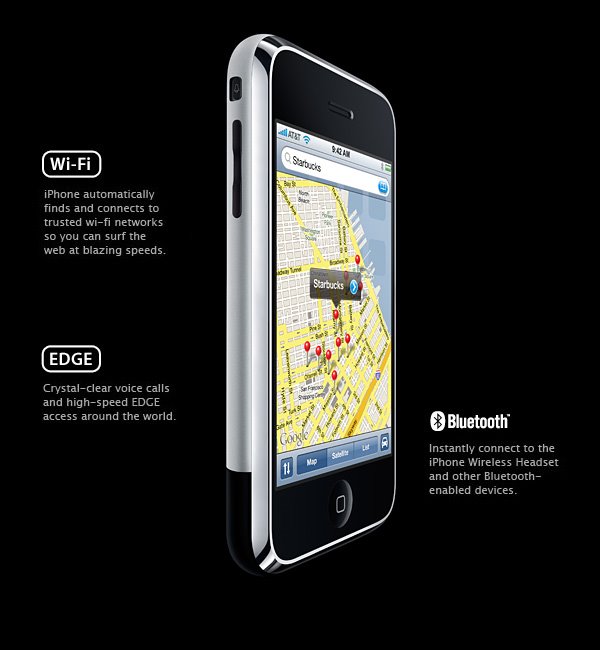Mobile Developers disappointed with the iPhone
No one ever said Apple marketers weren't clever. So if they wanted to start a firestorm of ISVs developing applications for the iPhone, how better to do that than to make development as simple as possible with the least barriers?
Nevertheless, until we hear more details from Apple about the way in which applications are handled on the iPhone, we won't know how clever Apple really is.
At WWDC07, Jobs promised that there will be a "new way to create applications for the iPhone" due mainly to the fact that it uses the full Safari browser engine.
But a lot of developers are disappointed with what Apple is offering.
"Web-based apps are cool for a lot of things. But what people were looking forward to was to to let them develop native applications," said Anthony Meadow , president of Bear River Associates , an ISV for mobile applications
Without native access to facilities, you don't have storage or sharing of information between applications, or reading and writing from address book and iCal. "There is not any easy way to do that with a Web-based application," said Meadow.
Overall, Meadow was not impressed. Although he admitted it is really not very clear what Apple intends. But, he added, "If they don't intend to have access, they should just tell us."
Ken Dulaney, the senior mobile analyst with Gartner says Apple's Web 2.0 solution is likely to be similar to what RIM does now.
"It avoids having to put code down on the device," Says Dulaney, which in turn protects it from crashing due to outside influences.
On RIM devices, the application is rendered on the server side, and the cache in the browser reformats it and pushes it down to the device.
"The code is only resident briefly on the device," Dulaney said.
Similar technology is also used by device manufacturers using mobile Linux from MontaVista.
Now resident on tens of millions of cell phones, the MontaVista design uses a "computing peer" design, Linux on the server and on the phone, giving developers the flexibility of partitioning an application on the client side and server side. An ISV can put a heavy load on the phone or a light one, says Jim Ready, CTO and founder of MontaVista.
"Linux on the phone is every bit as capable as Linux on the server," said Ready.
Certainly this supports similar statements from Jobs about Safari on the desktop and Safari on the iPhone.
However, like Meadow at Bear River, Ready has some reservations about the future capabilities or the richness of applications running on the iPhone.
When applications are developed solely using an "abstracted" development environment that doesn't talk to the lower layers of the device, such as the hardware and middleware, there is a dividing line in terms of the capabilities of the application.
"Take video frame rates. The reason you back out of an abstracted environment is because you pay for the abstraction in performance. It is a tradeoff," said Ready.
And not only for performance -- developers also need to write native applications that get down closer to access the hardware and the middleware for size and control reasons, as well, although Meadow doesn't see access to hardware as a major problem. "There is a handful of people that care about writing to the chips. It is possibly useful for really high performance graphic drivers and low level networking code," he says.
So where does that leave gamers and business users whose need for rich network applications might be problematic on the iPhone?
Unfortunately, until the full story is known, it is hard to tell what the software limitations of the iPhone will be. Certainly, if Apple wants the device to be a great mobile gaming system for use by millions of road warriors during those long waits at the airport, it will have to address the issue of how to get developers to write applications native to both the hardware and middleware.
In business as well, cell phones are currently being used with customized software, such as bar code and RFID readers.
"You can't do that with a browser interface," says Jerry Panagrossi, vice present of U.S. Operations for Symbian. "You need something more in-depth that can talk to IBM or Oracle middleware using native APIs for a richer experience."
Jim Ready at MontaVista sums it up when he says keeping the development environment as simple as possible will facilitate the largest amount of applications. As far as the capabilities of those applications Ready says, "There are limits, but sometimes it's okay that there are limits."
Source





No comments:
Post a Comment